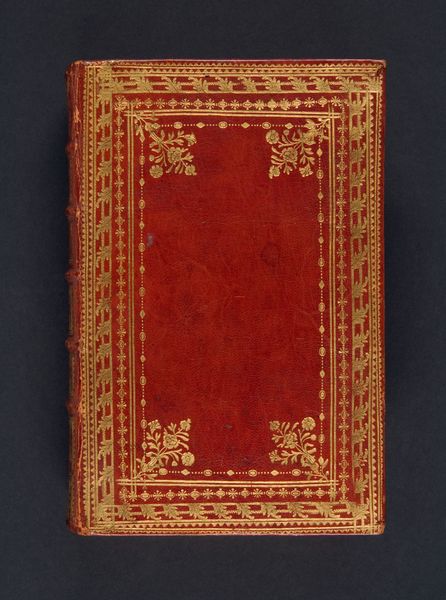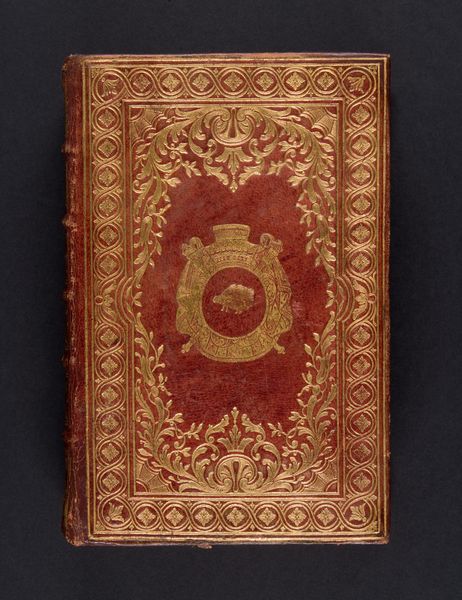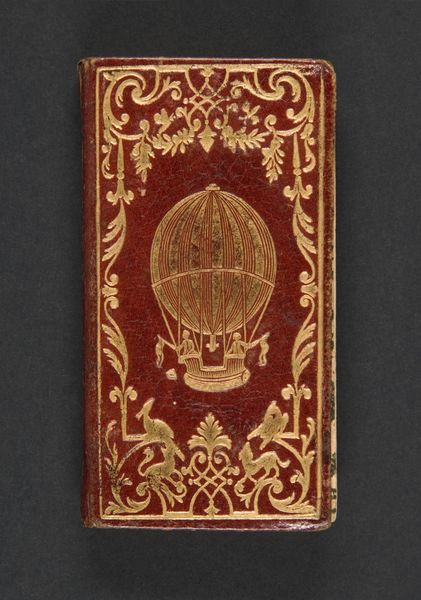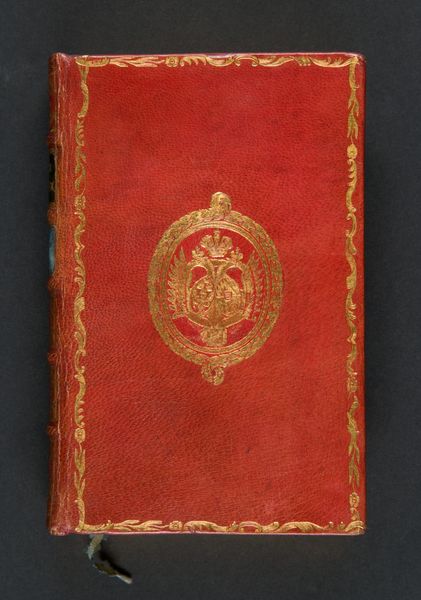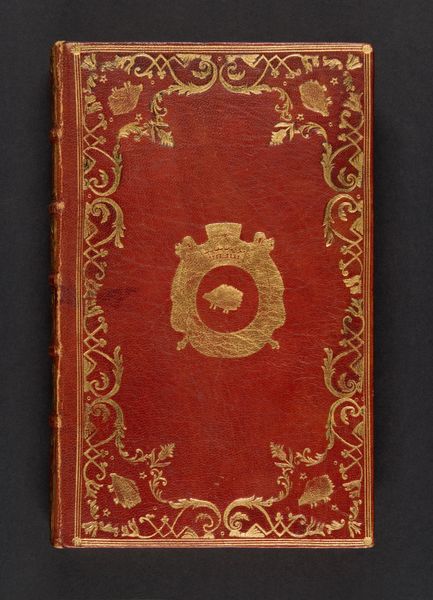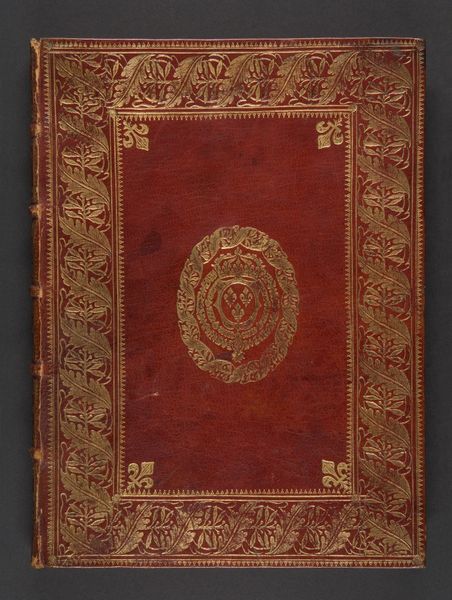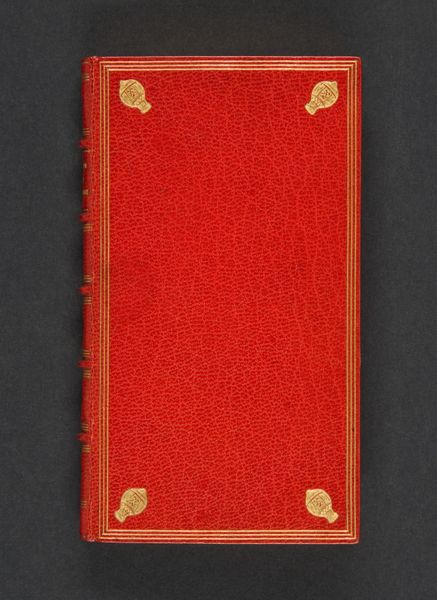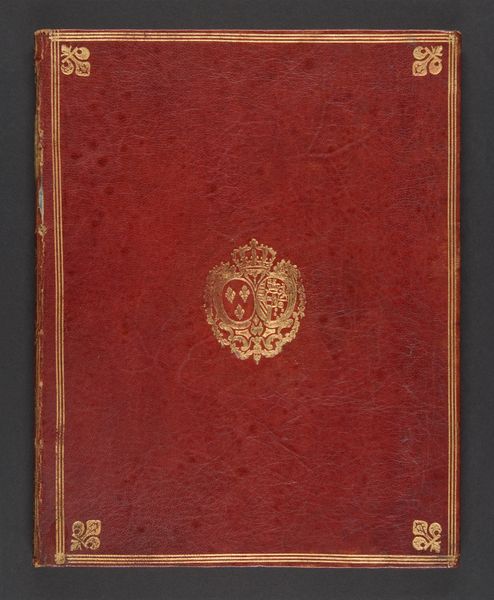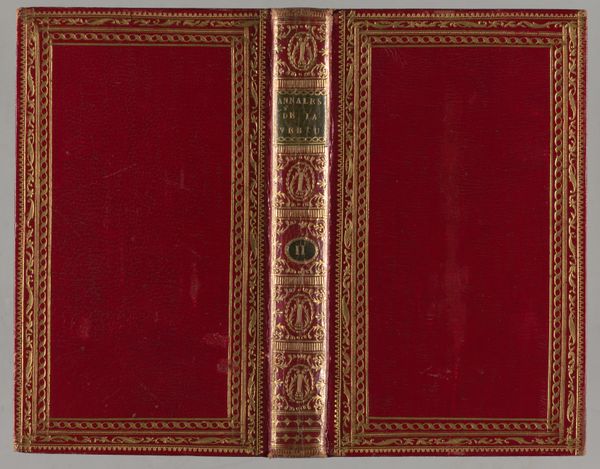
La dedvction de l'innocence de messire Philippe Baron de Montmorency, Conte de Hornes, franc seigneur de Vveert, admiral & capitaine general de la Mer du pais bas ... contre la malicievse apprehension, indeüe detention, injuste procedure, fausse accusation, iniques sentences et tyrannicque exécution en sa personne à grand tort, par voye de faict perpetrees 1568
0:00
0:00
gold, guilding
#
decorative element
#
book
#
gold
#
decorative
#
guilding
#
pattern background
#
decorative-art
Dimensions: [16], 573 [i.e. 572], [2] pages ; Overall: 6 1/8 × 4 1/8 × 1 3/8 in. (15.6 × 10.5 × 3.5 cm)
Copyright: Public Domain
Editor: We're looking at "La dedvction de l'innocence de messire Philippe Baron de Montmorency..." from 1568, seemingly created by Jacques de Wesenbeke. It’s currently held at the Metropolitan Museum of Art. It looks like a book cover, with gold gilding over what appears to be leather. I'm struck by how intricate and decorative it is. How do you approach analyzing something like this? Curator: My interest lies primarily in the formal relationships within this artifact. Consider first the color palette: a vibrant vermillion red dominating the field, juxtaposed against the intricate gilded patterns. How does this contrast create visual interest, and how does the symmetrical composition influence the reading of the work? Editor: It does make it seem very balanced and ordered. It’s also quite striking how much the gold leaf catches the eye, especially with the symmetry you mentioned. Curator: Exactly. Note the repetition of floral and foliate motifs. This repetition creates a rhythmic visual structure. Moreover, consider how the central cartouche functions as a focal point, framed and set apart by the surrounding decoration. Can we decode this visual language? Editor: Is the darker oval in the center acting as an anchor for the eye? Almost like a window, framed by that elaborate golden decoration? Curator: Precisely. It arrests the gaze and invites closer inspection. This object represents a particular historical moment expressed through visual design, demonstrating formal and symbolic intentions. Editor: So you're suggesting its formal elements work to emphasize specific features and guide the eye across the work? The symmetrical gilded elements help build the story? Curator: Precisely. The arrangement of colors, shapes, and decorative devices all work together to contribute to the overall composition. Understanding this framework is key to appreciating its aesthetic and intellectual significance. Editor: I'm starting to see it less as just decoration, and more as a deliberate structure. Thanks! Curator: My pleasure. By examining these inherent artistic choices, we gain insight into its formal sophistication and design philosophy.
Comments
No comments
Be the first to comment and join the conversation on the ultimate creative platform.
